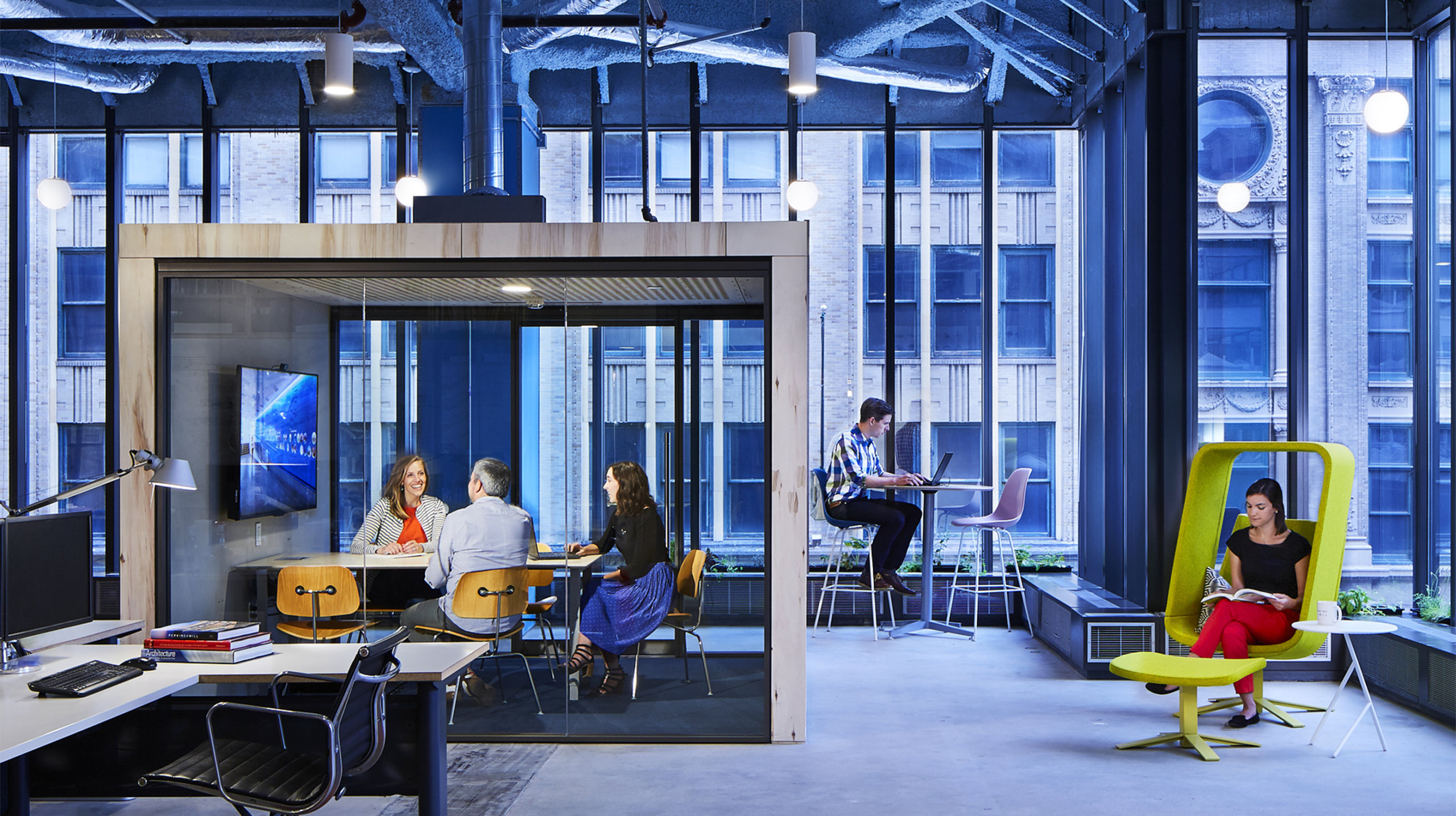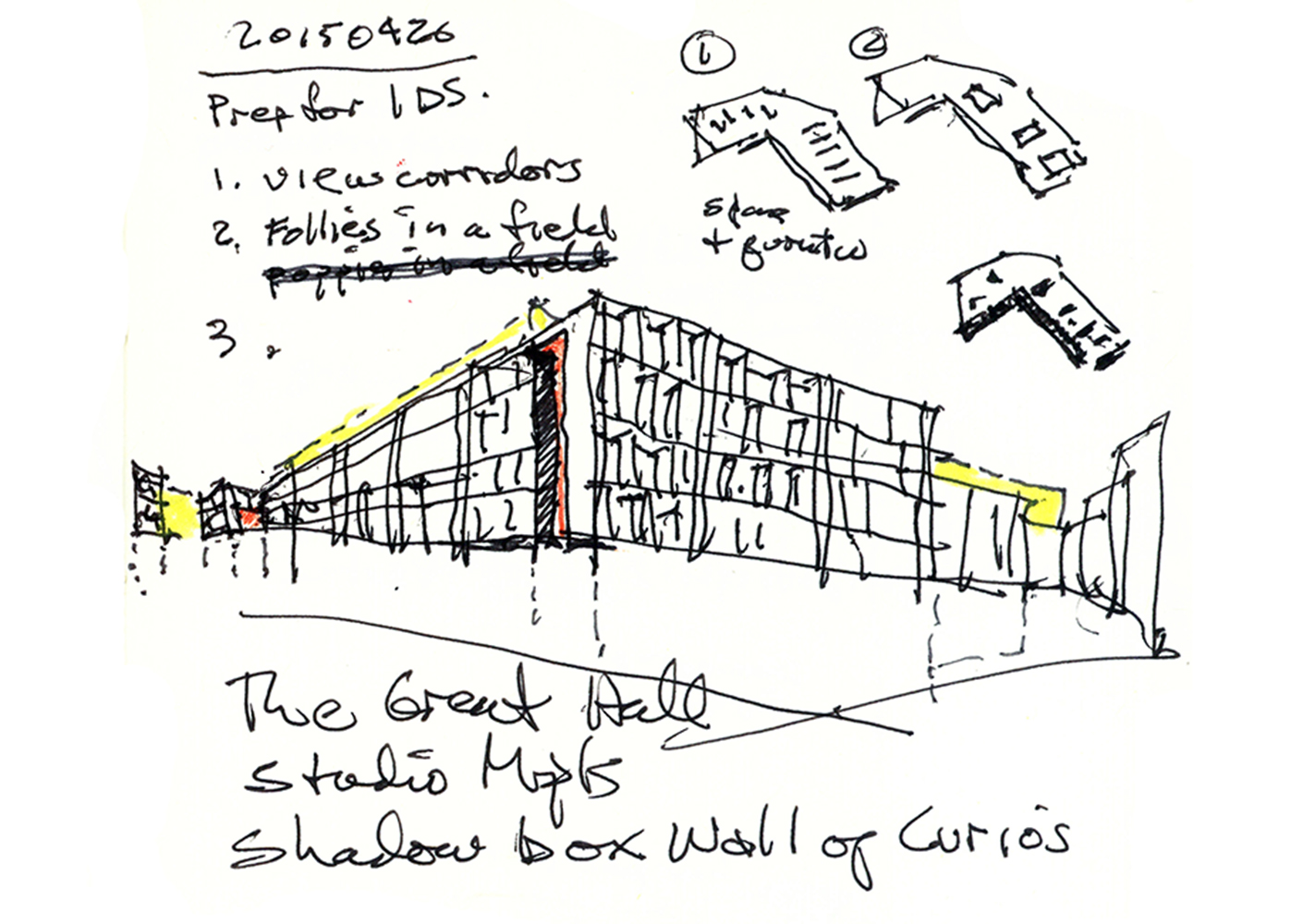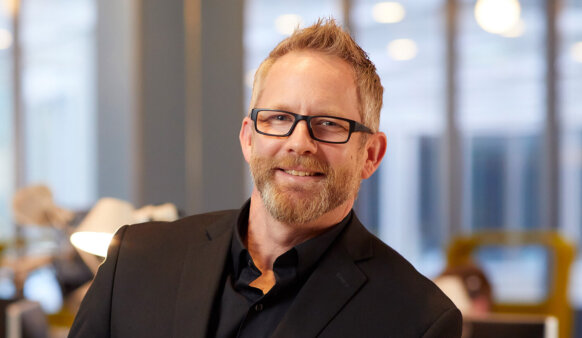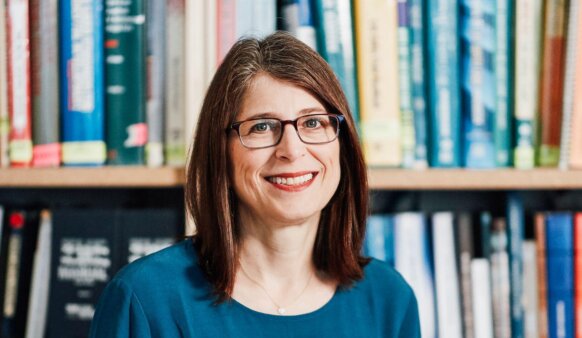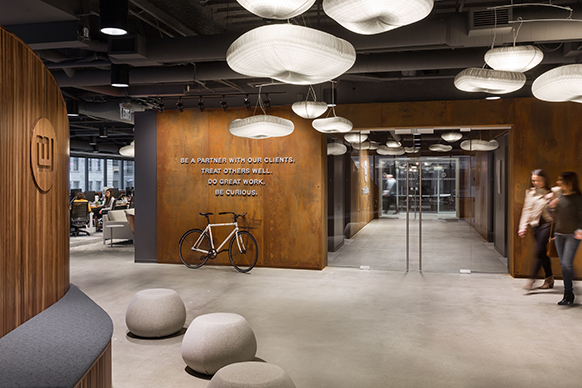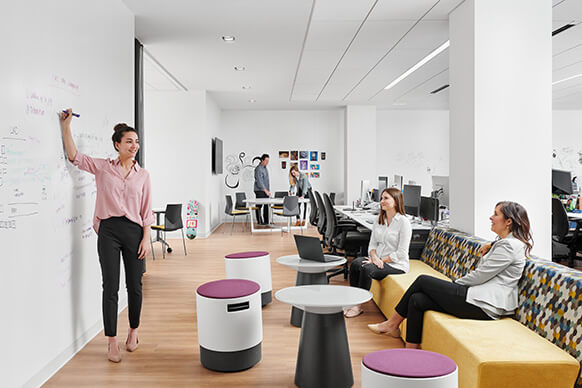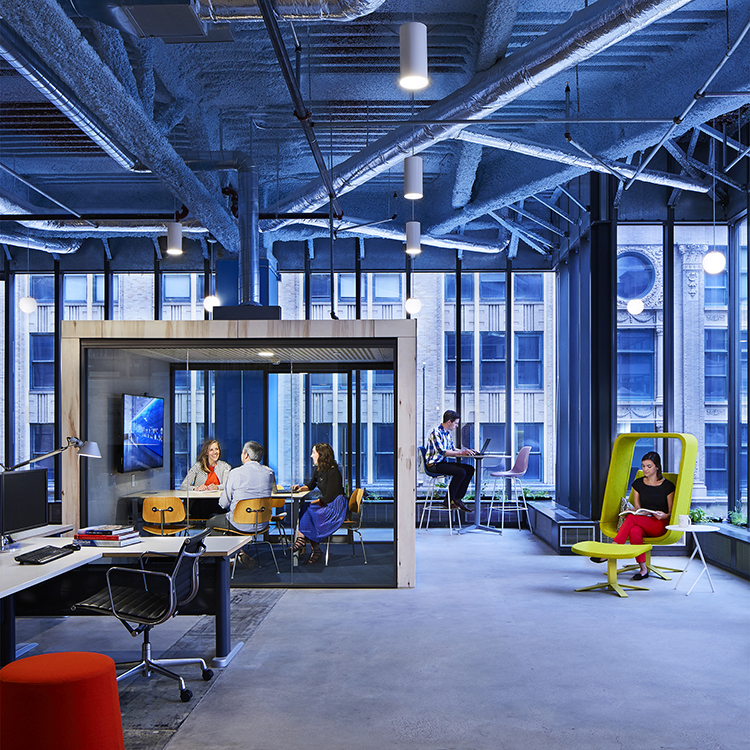
Our Minneapolis Studio
Our interdisciplinary design studio saw the relocation to IDS Center as an opportunity to craft a playful work-in-progress—a constantly evolving maker-space, sharing work and testing new ideas for our clients. Our self-designed Minneapolis studio now embodies our core values through a transformative workplace strategy that introduces a wider variety of workplace and meeting settings, a material palette that offers optimal indoor air quality, and responsibly sourced materials that minimize our planetary impact.
Our 100% free address workplace empowers employees with choice throughout their day, and we are able to occupy 50% less real estate with room to grow. A 200-foot gallery wall unifies the space and houses shared materials, project files, and curated work—each vertical surface has multiple purposes. Project rooms are glazed to expose our workings of design and collaboration to the studio community and visitors.


Only five new materials were introduced to create the studio – wood, glass, homasote, whiteboard, and carpet. Each material was extensively researched for its safety and impact on indoor air quality. For the plywood, we worked with the manufacturer to remove one of the veneer layers to improve its effect on our indoor air quality. The blue gyp-board is a new toxin-absorbing product, so we left it exposed to enhance its effect.

Less walls, no paint, simpler materials, less energy use. The raw material palette is deliberate, providing a visual reminder of this value. Adequately functional and acoustical, the existing floor and ceiling were left untouched. A majority of the plywood millwork used throughout the space, if not repurposed shelving from our old space, is sourced from a rapidly renewable resource – Aspen. What furniture we could reuse, we did, and all wood used in this project was either salvaged or is FSC Certified.
We utilized less walls, less fixed furniture, and removed all seating assignments – which offers employees more opportunity for choice, creativity, and collaboration. Flexible and fluid to meet changing needs and ideas, our space offers 190 seating options for our 65 employees and guests, none of which are fixed permanently to the floor. With this self-organizing model, people have the choice to work where and how they please, allowing teams to quickly mobilize and collaborate.

Heidi Costello, Senior Interior Designer, Perkins&Will

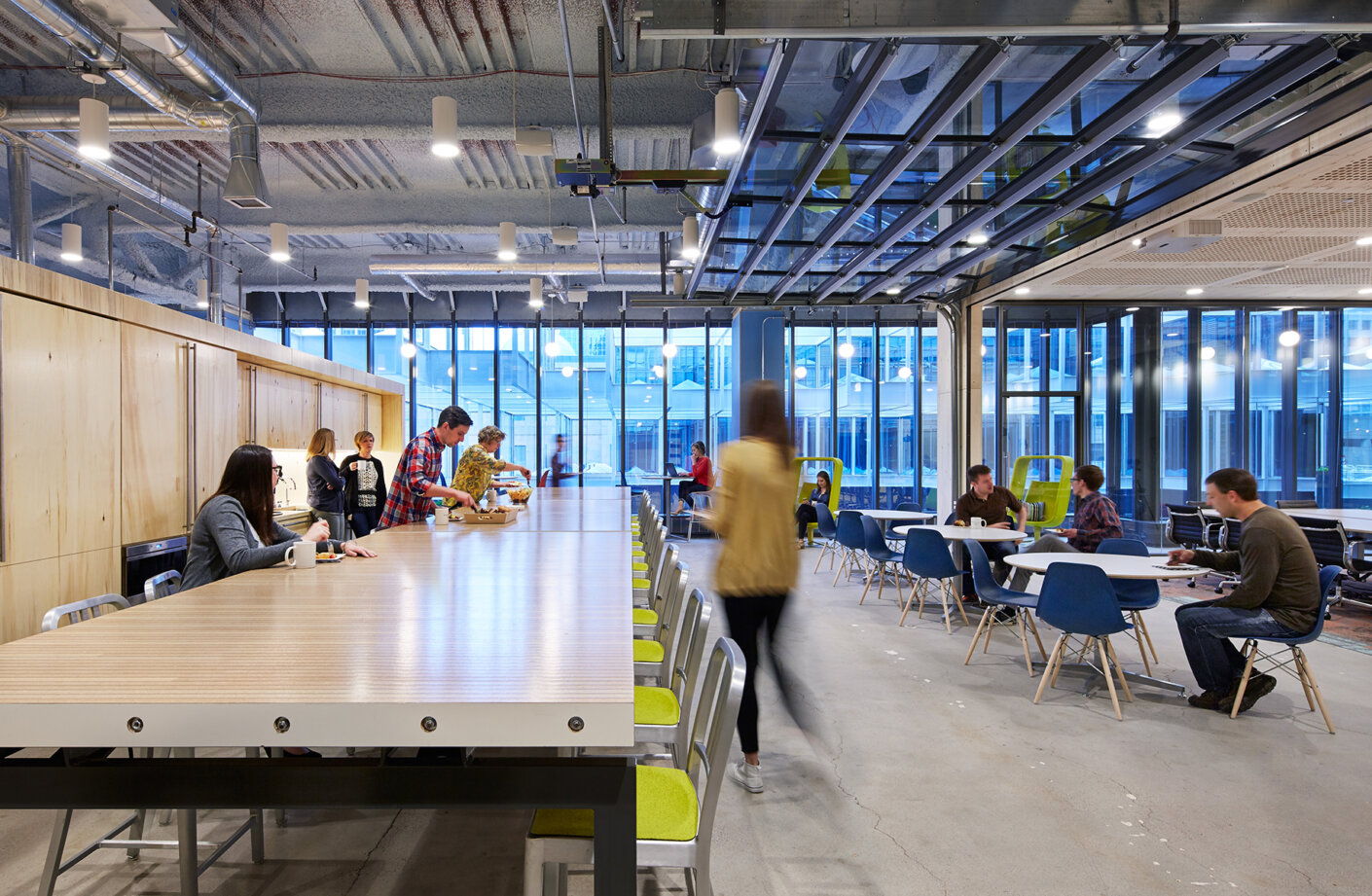

Starting with a pilot project in our previous space, we tested a free-address model through a volunteer program which would later inform the types of spaces we would need, the technology required for seamless mobility, and the idea that we needed to go all-in for this to work. We collected both hard and soft data through observation, surveys, and feedback on mock workstations. Conducting a pre- and post-occupancy survey, and a Leesman workplace effectiveness survey, we were able to obtain real workplace metrics about space and share it with our clients.
David Dimond, Design Principal, Perkins&Will
